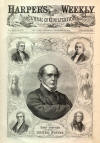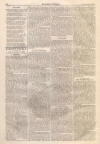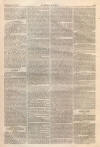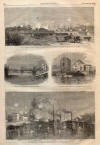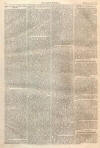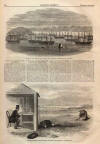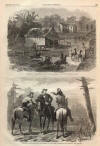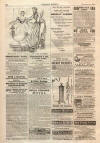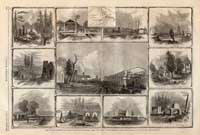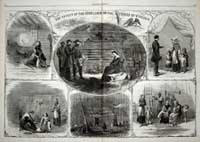|
This Site:
Civil War
Civil War Overview
Civil War 1861
Civil War 1862
Civil War 1863
Civil War 1864
Civil War 1865
Civil War Battles
Confederate Generals
Union Generals
Confederate History
Robert E. Lee
Civil War Medicine
Lincoln Assassination
Slavery
Site Search
Civil War Links
Civil War Art
Mexican War
Republic of Texas
Indians
Winslow Homer
Thomas Nast
Mathew Brady
Western Art
Civil War Gifts
Robert E. Lee Portrait
|
CHIEF JUSTICES OF THE UNITED
STATES.
JOHN JAY, the first
Chief Justice of the United States, was born in New York, December 12, 17 45. He
graduated at Kings (now Columbia) College, in 1764, and was admitted to the bar
four years later. When the Revolutionary troubles came on he took a prominent
part in the contest. He was the youngest
member of the first Congress, which convened in
1774. We can barely allude to his civil services during the Revolution. In 1777
he prepared the draft of the Constitution of the State of New York,
and was appointed the first Chief Justice of
the State. In 1779 he was sent on a mission to Spain. That Government demanded
as a condition of recognizing
the independence of the United States, that the possession of Florida and the
exclusive right to navigate the Mississippi should be guaranteed to Spain.
JAY refused to
consent that the mouth of our great river should be shut up by a foreign power.
In conjunction with ADAMS, FRANKLIN,
and LAURENS,
Mr. JAY
negotiated the treaty by which Great Britain recognized the Independence of the
United States. In 1784 he returned to his country and was appointed Secretary
for Foreign Affairs. When the Union took the place of the old Confederation,
WASHINGTON
requested him to select any office which he might prefer. He chose that of Chief
Justice of the United States, to which he was appointed in 1789. In 1794 he was
sent to Great Britain as Envoy Extraordinary, to negotiate an important treaty.
This treaty, which settled the questions in dispute between the two nations, was
violently opposed by the Democratic party, especially
at the South. He was absent a year, during which time he was elected Governor of
New York. He then resigned the Chief Justiceship, was twice re-elected Governor,
and then, in 1801, at the age of fifty-six, resolved to retire from public life.
President ADAMS,
wishing to retain his services for the public, nominated him for his former
place as Chief Justice, then vacant by the resignation of OLIVER
ELLSWORTH. JAY
declined, on the ground that he had deliberately made up his mind to retire from
public life, and duty to his country did not then re-quire him to accept office.
He retired to his farm in Bedford, New York, where he died May 17, 1829, in the
eighty-fourth year of his age. While the question of the adoption of the Federal
Constitution was before the people, HAMILTON, MADISON,
and JAY
projected the famous series of essays called the
Federalist. JAY
wrote the second, third, fourth, and fifth numbers, furnishing no more until the
sixty-fourth number. During the greater part of the interval he was lying
between life and death. A party of medical students had violated the grave to
acquire subjects for dissection. They were put in prison ; but a mob threatened
their lives. JAY
and others, under the lead of HAMILTON,
joined to prevent the outrage ; they were set upon by the rioters,
and JAY was
struck on the temple by a stone, and almost killed. He recovered only in time to
write the single additional paper, on a subject which he was especially
requested to undertake. To this accident it is owing that the
Federalist,
valuable as it is, was not rendered still more valuable by contributions
from one who was recognized as the ablest political writer in the United States.
Mr. JAY was
one of the noblest and purest characters
in our
history. Party spirit ran higher in his day than ever since. The most virulent
personal attacks were made by party writers and speakers.
WASHINGTON
himself did not escape detraction ; but
no man, except a few violent partisans in South Carolina, however much he might
oppose his public
policy, dared to asperse the perfect integrity of
JOHN JAY.
Upon the resignation of Mr.
JAY, JOHN RUTLEDGE was nominated by the President as Chief Justice of the
United States. He was born in 1739, in South Carolina, whither his father had
emigrated from Ireland four years before. He studied law in the Temple in
London, and returned to
Charleston in 1761, where he at once gained the highest
rank at the bar. He espoused the cause of the colonies at the outset of the
troubles with Great Britain. In 1776 he was appointed President and
Commander-in-Chief of the Colony of South Carolina. It was owing to him that
Fort Moultrie was not abandoned to the enemy without a struggle. General
LEE, who commanded the Continental troops, pronounced the fort a "
slaughter-pen," and wished to evacuate it.
RUTLEDGE wrote to
MOULTRIE, " General
LEE wishes you to evacuate the fort. You will not without an order from
me. I would sooner cut off my hand than write one." When the Constitution of
South Carolina was framed
RUTLEDGE refused his assent, on the ground that it was too Democratic. He
finally yielded his scruples, and was appointed Governor, with the real power of
Dictator. In 1789 he was appointed Associate Judge of the Supreme Court of the
United States, and in 1791 Chief Justice of South Carolina. In 1795 he was
nominated by
WASHINGTON Chief Justice of the United States. The treaty negotiated by
JAY with Great Britain excited a storm of indignation in South Carolina.
RUTLEDGE made a violent speech against it at Charleston,
just two days before his appointment as Chief Justice reached him, in
which he spoke in bitter language of the leaders of the then dominant Federal
party, of which be had hitherto been considered a member. In August, 1795, he
presided at a session of the Supreme Court, and in November started to hold a
circuit in North Carolina, when he was attacked by sickness, and his mind was
apparently affected. This, and the remembrance of his recent Charleston speech,
induced the Senate to refuse to confirm his nomination—a refusal by no means
disagreeable to the President, who was strongly in favor of
JAY'S
treaty. Mortification at this rejection extinguished the last remnant of
RUTLEDGE'S
sanity, and he died in 1800 at the age of sixty-one.
The President then nominated as Chief Justice Judge
WILLIAM CUSHING of Massachusetts ; the nomination was confirmed ; but Mr.
CUSHING, after holding the commission a few days, resigned on ac-
count of ill health. As he never acted in that capacity his name does not
properly belong to the list of Chief Justices.
OLIVER ELLSWORTH
was then nominated and confirmed as Chief Justice. He was born at Windsor,
Connecticut, April 29, 1745. His studies commenced
at Yale, were completed at Princeton, where he graduated at the age of
twenty-three. For a time he was a teacher, then commenced the study of theology,
but subsequently decided on the profession
of law. He had then married, and his father gave him a farm of wild land and an
axe. While slowly working his way at the bar he cleared his wild farm with his
own hands. His early career gave no promise of future eminence ; but the first
upward steps once taken his progress was sure. He was appointed State's
Attorney, and yearly elected to the General Assembly. In 1777 he was chosen
delegate to Congress, in 1784 Judge of the Superior Court of Connecticut, and in
1789 Senator in Congress. In 1796 he was appointed Chief Justice
of the United States. His unquestioned probity and the soundness of his judicial
decisions gained him the highest respect. In 1799 he was sent, against his
wishes, as minister to France, though still retaining for two years his seat on
the bench. His health failing he resigned his office in 1801. He died November
26, 1807, at the age of sixty-two.
JOHN MARSHALL, the
most eminent of our Chief Justices, was born in Fauquier County, Virginia,
September 24, 1755. His father was a farmer in narrow circumstances, but of
decided ability. There were no schools in what was then the frontier region,
and the early education of the future Chief Justice was conducted by his father,
aided for about a year by the clergyman of the parish, with whom he began to
read Horace and Livy. By his own unaided exertions he subsequently became a fair
classical scholar, and was intimately acquainted with English literature. He had
just begun the study of law when the war of the Revolution broke out. In 1775 he
was appointed lieutenant in a company
of minute men. He afterward became captain
in a Virginia regiment of the Continental army, and was present at the battles
of Brandywine, Germantown, and Monmouth. He pursued his legal studies at
intervals during the war, and at its close commenced practice. He soon rose to
eminence at
the bar and in politics. He was one of the small but distinguished body of men
through whose influence Virginia was induced to accept the Federal
Constitution. In 1794 WASHINGTON
offered him the post of Attorney-General, and subsequently
the mission to France. Both offers were declined.
The French Government having refused to receive. Mr. PINCKNEY
as minister, Mr. ADAMS,
who was then President, appointed Mr. MARSHALL
as one of three envoys to that country. Shortly after his return he yielded to
the personal solicitations
of WASHINGTON,
and consented to become a candidate for Congress. President ADAMS
at the same time offered him a seat on the bench of the Supreme Court, which was
declined. He was elected
to Congress, after a sharp contest, taking his seat
in December, 1799. During the excited session
which followed he was one of the ablest supporters of
the administration of Mr. ADAMS.
In May, 1800, he was nominated and confirmed as Secretary of War; but he
declined to accept the appointment. Shortly
after he accepted the post of Secretary of State. On the 31st of January, 1801,
he was appointed Chief Justice of the United States, a position which he held
for thirty-five years, until his death in July, 1835, at the age of eighty
years. His unquestioned character, sound judgment, and felicitous diction, added
to the long period during which he held his seat, and the magnitude of the
questions which came before him for decision, entitle Mr. MARSHALL beyond
all question to the first place in the noble list of our Chief Justices. Besides
his judicial labors
he was the author of a History of the American
Colonies, and of a Life of Washington, which we must still regard as the best
yet written.
ROGER BROOKE TANEY
was born in Calvert County, Maryland, March 17, 1777. In 1831 President
JACKSON appointed
him Attorney-General of the United States. Two years later Mr. DUANE,
then Secretary of the Treasury, refused to remove the Government deposits from
the United States Bank; he was removed, and Mr. TANEY
was appointed
in his place. The Senate refused to confirm the nomination ; but in the mean
while Mr. TANEY
had obeyed the orders of the President and removed the deposits. JACKSON
then nominated him as Associate
Justice of the Supreme Court, to fill a vacancy
occasioned by the resignation of Judge DUVAL.
The Senate refused to confirm the nomination.
Chief Justice
MARSHALL
died in 1835, and
JACKSON at
once nominated Mr. TANEY
for the place. The Democrats having now a majority in the Senate confirmed the
nomination, and Mr. TANEY
became Chief Justice—a position which he retained until his death, October 12,
1864, a period of twenty-seven years. Chief Justice TANEY
is best known by his famous "decision," or rather "opinion,"
in the Dred Scott case, in which, going beyond the question
before the Court, he endeavored to settle the general question of the
status of
persons of African descent in the United States. Undeserved obloquy
has been attached to him on account of a sentence in this opinion which
apparently affirmed that blacks had no rights which whites were bound to
respect. The context shows that this was the very reverse of the meaning
intended to be conveyed
by Judge TANEY. He says that it is now difficult to realize the state of opinion
on this subject held at the formation of our Government. Blacks were then
regarded as beings of an inferior order, "and so far inferior that they had no
rights which the white man was bound to respect." This outrageous
sentiment is mentioned only to be impliedly condemned. The "opinion" of the
Chief Justice, harsh enough as he gave it, being to the effect that no person
whose ancestors were imported to this country and sold as slaves had any right
to sue in a court of the United States, or could become citizens of the United
States, It is due to the honor of our highest judicial tribunal to state that
the opinion of
the Chief Justice did not affirm, but did by plain implication condemn, the
doctrine that such persons " had no rights which whites were bound to respect."
Mr. TANEY'S last notable public act was in May, 1861, when the case of John
Merryman came before him. This man was arrested near Baltimore, on charge of
being an officer in a company raised to aid the rebellion. He was imprisoned by
the military authorities in Fort M'Henry. He prayed for a writ of habeas corpus,
which was granted by Judge TANEY. General CADWALADER, the commander, refused to
obey, on the ground that the execution of the writ of habeas corpus had been
suspended by the President in the State of Maryland. The Judge issued an order
for the arrest of General CADWALADER. The Marshal was not allowed to serve the
writ. Judge TANEY thereupon prepared an opinion, denying the right of the
President to suspend the writ, and affirming that it was the duty of all
military officers to obey it. He added that if the officer had been brought
before him he should have punished him by fine and imprisonment ; but as he had
no force capable of carrying his order into effect, he should report the whole
case to the President, and call
upon him to enforce the process of the court. No further action was had
on the case. Mr. TANEY died October 12, 1864, at the age of eighty-seven, having
filled the chief judicial chair of the nation for twenty-seven years. He owed
his appointment to the purely partisan services which he rendered to President
JACKSON. As a jurist he can not be ranked with the great men who had occupied
his seat before him. His judicial integrity has never been impeached, even in
the case of his unfortunate opinion in the Dred Scott case, or the later and
equally unfortunate course in the Merryman case, by which he will be chiefly
remembered in after years.
SALMON PORTLAND CHASE, now Chief Justice of
the United States, was born in Cornish, New Hampshire, January 13, 1808. His
father having died, he was sent at the age of twelve to Ohio, and placed under
the care of his uncle, Bishop CHASE. After studying for a year at Cincinnati
College, he entered
Dartmouth College in New Hampshire, from which he graduated in 1829. He went to
Washington, where he opened
a school, at the same time studying law under the direction of WILLIAM WIRT.
Having been admitted to the bar, he went to Cincinnati,
and entered upon the practice of his profession.
To this for some years he applied himself exclusively, taking no prominent part
in politics, although he belonged to the
Democratic party. In 1841 he first took
a decided part in politics. He was then a member of the Convention of those
opposed to the further extension of slavery, and was the author
of the Address unanimously adopted by that body. He took a prominent part in all
the subsequent movements
having this end in view, and was President of the Free Soil Democratic
Convention at Buffalo in 1848. The Democratic party hi Ohio had at this time
assumed the position of hostility to slavery in the Territories. Mr. CHASE was
chosen United States Senator in February, 1849, receiving the votes of all the
Democratic members of the Legislature,
together with those of others who were in favor of free soil. Though elected as
a Democrat, he declared that if the party withdrew from its position
in regard to slavery he should withdraw from it. This he did formally in
consequence of the action of
the Democratic Convention held at Baltimore
in 1852. When the Republican party was organized
Mr. CHASE took the position of one of its acknowledged leaders. Soon after the
close of his Senatorial term in 1855 he was elected Governor of Ohio. He was
re-elected, his second term closing in 1860. In the Republican Convention at
Chicago in that year he was next after
Mr. LINCOLN and
Mr. SEWARD the leading
candidate for the Presidency. He had in the mean time been again elected to the
Senate of the United States, and had he taken his place would undoubtedly have
been the leader in that body. But he resigned his seat in order to accept the
position of Secretary of the Treasury—a position for which he was especially
pointed out by the success of his financial policy while Governor of Ohio. It is
honorable to all the persons that the three leading competitors of Mr.
LINCOLN for the Presidential nomination should have
received and accepted his nomination as members of
his Cabinet. As the Presidential canvass of 1864 approached a strong effort was
made to bring forward Mr. CHASE. as the Union candidate ; but the current of
popular feeling was so unmistakably in favor of the re-election of Mr. LINCOLN
that Mr. CHASE refused to become a candidate, and gave his cordial support to
Mr. LINCOLN. Meanwhile, finding
that Congress hesitated to carry out the financial
system which he proposed, Mr. CHASE had on the 30th of June, 1864, resigned the
post of Secretary of the
Treasury. Almost the first important public act of Mr. LINCOLN after his
re-election has been to appoint Mr. CHASE to the most important position within
the executive nomination. Mr. CHASE enters upon the duties of his high office at
the age of fifty-six, with a sound legal reputation, and with a physical vigor
which gives reason to hope that he may be able to perform its duties for a
period as long as that of his predecessor.
The Supreme Court of the United States consists of a Chief Justice, with a
salary of $6500, and nine Associate Justices, with salaries of $6000. It holds
one session annually at Washington, commencing on the first Monday of December.
For judicial purposes the United States are divided into ten circuits, in each
of which a Circuit Court is held twice a year for each State by one of the
Justices of the Supreme Court, and by the District Judge of the State or
District. The following is a list of the Justices of the Court, with the date of
their several appointments :
Chief Justice.—SALMON P. CHASE, of Ohio, 1864.
Associate Justices. —
JOHN CATRON, Tennessee,
1837.
NATHAN CLIFFORD, Maine, 1858.
DAVID DAVIS, Illinois, 1863. STEPHEN J.
FIELD,
California, 1863.
ROBERT C. GRIER, Pennsylvania,
1846.
SAMUEL F. MILLER, Iowa, 1862.
SAMUEL NELSON, New York, 1845.
NOAH H.
SWAYNE, Ohio, 1862. JAMES M. WAYNE, Georgia, 1835.
CAPTURE OF PLYMOUTH, N. C.
WE engrave on
page 820 four illustrations relating to the recent Capture of
Plymouth, North Carolina. One of these gives a view on the Roanoke River, on
which Plymouth is situated; the others relate to the battle which resulted in
the capture of the city, and the appearance of the rebel ram Albemarle after the
blowing off of her casemate.
On Monday morning, October 31, the fleet, under Commodore MACOMB, having
succeeded in making the passage up Middle River into the Roanoke, two miles
above Plymouth, formed in line of battle and steamed down the river at 11. A.M.,
in the following order : Hull,
Shamrock, Otsego, Wyalusing, Tacony, and tugs Martin and Baisly. The Hull
is an old New York ferry-boat, and has been in a great many fights, always doing
good service. She was sent ahead, being able to fire two heavy guns directly
forward. She signaled that all was right, and the fleet steamed on, the pilot
picking his way among the obstructions. As it rounded a bend it encountered a
battery of 9-inch guns half a mile distant. As each ship came within range a
terrific broadside of grape and canister was delivered within their works,
driving all from before it. Three more batteries
were then encountered and engaged, while the rifle-pits and store-houses
along the water front of the town were filled with sharp shooters. The Hull
seemed ready to lift into the air from the explosions
around her and beneath her guards. She stopped, and the Shamrock dashed
past, and as her steering gear was
disabled she was severely cut up, and many dead
and wounded crowded her deck. Thus the fight went on till the rebel
magazine was exploded, scattering timbers in all directions, and setting the
town on fire in several places. From this moment the rebel fire slackened, and a
party landing from the ships took possession of the forts, raising the Stars and
Stripes at 30 minutes past 12. The retreating rebels were pursued by shell from
the Tacony and Wyalusing, producing great slaughter among them : and within an
hour none remained except some fifty prisoners. The Albemarle was found sunk at
the wharf. The captain had endeavored to disable her as much as possible by
exploding a torpedo in her casemate the day after she was sunk by
Lieutenant
CUSHING. She now lies on the bottom, with only the upper part of her casemate
out of water, and the top of that blown completely off.
GRANT'S MILITARY RAILROAD.
ON
page 821 we engrave a series of sketches, giving a plan of GRANT'S Military
Railroad from City Point on the
James River to Patrick's Station on the left,
with views of the several stations. The road follows it general the line of our intrenchments. The line is of such length as to render this rapid means of
communication a military necessity.
Since
General GRANT first took a position in the rear of Richmond his
works, both offensive and defensive, have reached a high degree of elaboration.
Besides this railroad there is a "gridiron" of corduroy roads running in every
direction.
HOMES OF REBEL WOMEN.
THE interesting illustrations of the Homes of Rebel Women, sketched by WILLIAM
WAUD and given on pages 824 and
825, may be relied on for their perfect accuracy, being drawn from life.
When
General BUTLER'S Provost-Marshal visited the different houses on or near
our picket line to remove families, sending them through the lines at Suffolk,
our artist accompanied him. He writes : " I never saw such destitution. The
centre picture, the girl and baby in cradle, was one of the first we visited.
Her husband and all her male relatives were in the Southern army, and she was
alone, with nothing in the shape of food or drink in the hut, sitting sadly,
rocking her child beside the cold and empty fire place.
"In another house we found a woman with a number of little children, stooping
over a wretched fire parching corn, the sole thing eatable in the house.
" In another, two girls were rubbing corn on sheets of tin nailed to boards, a
rude contrivance for manufacturing meal. In this house we found a man, but he
was in bed, helpless with rheumatism. The middle lower sketch is the outside of
the last named hut, and is a fair representation of style of residence inhabited
by these unfortunates.
" In another house the women were aged, and nearly as helpless as the children
who surrounded them. However, they were spinning and doing some kind of needle
work, which, they said, had formerly supported them. The room shown was their
bedchamber, kitchen, sitting room, all in one.
The woman taking the oath of allegiance is one living within our lines, and
being destitute, draws rations from the Commissary Department. By a late order
all persons living within our lines above the age of sixteen, male or female,
must take the oath of allegiance to
the United States or go through the lines.
"The sketch of shell bursting in a house is an incident that occured lately. In
the house shown in the sketch of the fight near our rifle-pits a lady was badly
wounded, and two children slightly, by the bursting of a shell, which also
killed her dog: and her boy was wounded by a Minie ball. In all the houses we
visited we found no males between fifteen and fifty."
GUERRILLA DEPREDATIONS.
THE two illustrations on
page 829 refer us to scenes of frequent occurrence
along the border lino separating the Union and Rebel armies, and in the border
States, The northern portion of Missouri is more infested with this scourge than
any other section. There the citizens of the same State are arrayed against each
other. The most daring guerrilla operations of this war have been performed by
MOSBY in the east, and by
MORGAN and his fellows in the west.
|
